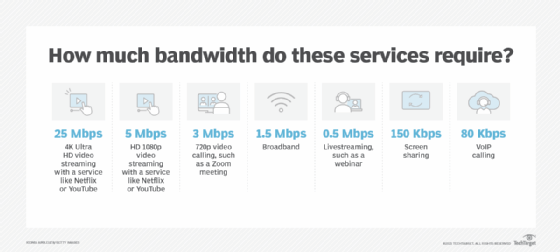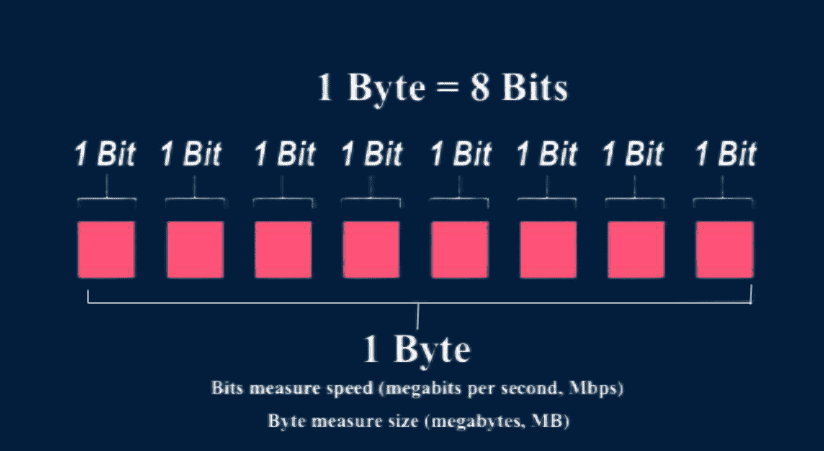The Role of Megabits Per Second in Online Video Gaming Efficiency
The Role of Megabits Per Second in Online Video Gaming Efficiency
Blog Article
How Megabits Per Second Impact Your Online Activities
The concept of megabits per second (Mbps) plays a pivotal function in shaping our online experiences. As electronic activities proliferate, understanding the implications of Mbps on gaming, streaming, and video conferencing ends up being significantly important. Greater Mbps can improve performance and minimize disruptions, while poor speeds might cultivate irritation and inadequacy. Examining your house's details demands in connection with these rates is essential, specifically as multiple tools try bandwidth. The subtleties of exactly how Mbps impacts numerous online activities warrant more exploration, specifically as our reliance on digital connection proceeds to progress.
Understanding Megabits Per Second
When taking into consideration internet rate, it's important to comprehend the idea of megabits per second (Mbps), which functions as a basic measurement for information transfer rates. This metric evaluates just how much information can be sent over an internet connection in one second, supplying a clear understanding of efficiency abilities - Megabits Per Second. For context, one megabit amounts to one million bits, and Mbps is commonly made use of to reveal transmission capacity for different on-line tasks
A higher Mbps suggests a quicker internet connection, enabling individuals to carry out tasks such as downloading and install data, surfing internet sites, and engaging in online gaming extra successfully. Regular surfing requires around 1-5 Mbps, while streaming high-definition video might require 5-25 Mbps. Recognizing these needs is essential for figuring out the ideal web rate needed for particular activities.
In addition, the number of gadgets connected to a network can influence general efficiency. Several individuals streaming, pc gaming, or downloading at the same time can strain readily available data transfer, resulting in slower rates - Megabits Per Second. Examining personal online habits and requirements is vital in picking a web strategy that aligns with one's needs, ensuring a smooth digital experience
Streaming and Buffering Issues
Streaming high-definition content has actually ended up being a staple of modern on the internet enjoyment, yet it is commonly gone along with by discouraging buffering issues. These disturbances can substantially detract from the checking out experience, leading to dissatisfaction and potential loss of audience interaction. Buffering occurs when the data sent from the streaming solution is not obtained quickly sufficient to keep a smooth playback, often because of inadequate web rate measured in megabits per second (Mbps)

Additionally, real-time streaming can be influenced by network congestion, which takes place when several gadgets share the exact same data transfer. Maximizing connection speed and ensuring adequate Mbps is important for a seamless streaming experience. As streaming services remain to advance, recognizing the impact of Mbps on buffering concerns stays essential for customers looking for uninterrupted enjoyment.
Online Video Gaming Efficiency
The influence of internet rate on online tasks extends past streaming, significantly affecting online gaming performance. In affordable pc gaming, reduced latency and high data transfer are essential for a seamless experience. A fast link minimizes lag, allowing gamers to react quickly to in-game events, which can be the difference between victory and loss.
Bandwidth, gauged in megabits per second (Mbps), plays an important role in supporting multiple tools and pc gaming platforms simultaneously. Not enough transmission capacity can cause went down connections or lowered video game top quality, adversely impacting gameplay. For circumstances, on the internet multiplayer games need significant information transfer, specifically throughout peak gaming hours when countless players are online.
Busy first-person shooters require higher speeds to preserve responsiveness, while turn-based method video games may function moderately well on lower find this speeds. As on-line pc gaming continues to advance, with raising graphical fidelity and more complicated multiplayer settings, the demand for higher Mbps will only increase.
Video Clip Conferencing High Quality
In today's digital landscape, read here video clip conferencing high quality is greatly influenced by internet rate, particularly in regards to transmission capacity and latency. High-quality video calls require sufficient bandwidth to transfer sound and video clip information effortlessly. Normally, a minimum of 1.5 Mbps upload and download speeds is recommended for common meaning video clip, while high-def video conferencing normally requires at the very least 3 Mbps.
Latency, or the hold-up between sending and getting information, additionally plays a critical duty in the individual experience. Low latency guarantees that conversations flow normally without unpleasant stops briefly or interruptions. Ideally, latency ought to be listed below 150 milliseconds for efficient interaction. Higher latency can lead to resemble, lag, and disjointed communications, which can impede cooperation and involvement throughout conferences.
In addition, several participants in a video conference can stress offered bandwidth, requiring even greater rates. Network congestion, frequently triggered by simultaneous tasks like streaming or downloading, can additionally degrade video clip quality. Therefore, for companies counting on video conferencing for remote collaboration, comprehending the relationship in between megabits per second and total interaction quality is crucial for preserving performance and improving digital communications.
Choosing the Right Web Plan
Picking an ideal net strategy is essential for ensuring optimal efficiency in different online tasks, specifically in settings that require high transmission capacity, such as video conferencing and online video gaming. Megabits Per Second. When considering a net plan, it is important to examine both the rate and information allowance to match your certain usage requirements
For families with multiple customers involving in synchronised activities, a strategy offering greater megabits per second (Mbps) is advised. Generally, a minimum of 25 Mbps appropriates for conventional streaming and surfing, while strategies exceeding 100 Mbps are preferable for even more extensive tasks. Furthermore, think about the nature of your online activities; video clip conferencing needs at the very least 1.5 Mbps publish speed, while on the internet gaming might require a reduced latency yet regular connection.
Endless information plans can stop strangling and disturbances, particularly if hefty use is expected. By attentively selecting an internet strategy tailored to your needs, you can enhance your on the internet use this link experience, making certain smooth, continuous accessibility to your favored tasks.
Verdict
In conclusion, the importance of megabits per second (Mbps) in forming on the internet activities can not be overemphasized. A complete understanding of specific or family Mbps needs is important for selecting a proper net strategy that properly supports diverse online tasks and individual needs.

Generally, a minimum of 25 Mbps is appropriate for conventional streaming and browsing, while strategies surpassing 100 Mbps are preferable for even more extensive jobs. Additionally, think about the nature of your online activities; video clip conferencing requires at least 1.5 Mbps post rate, while online pc gaming may need a lower latency yet regular link.
Report this page